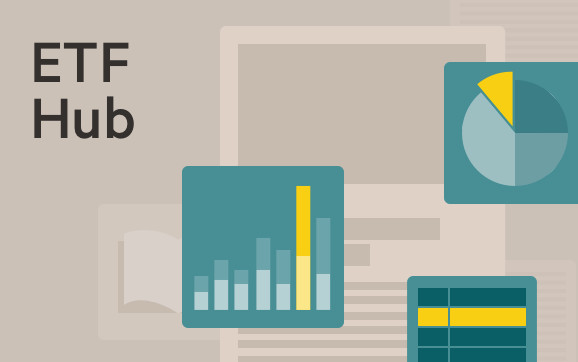Stockpicking ETFs attract inflows from European investors

Simply sign up to the Exchange traded funds myFT Digest -- delivered directly to your inbox.
Latest news on ETFs
Visit our ETF Hub to find out more and to explore our in-depth data and comparison tools
Exchange traded funds based on picking stocks are starting to make headway in Europe, following a boom in the US.
So-called active ETFs — which invest in stocks selected by a manager rather than passively following an index — in Europe have attracted investor inflows in each of the past seven quarters, drawing in a total of €9.3bn and taking total assets to €30.7bn, according to data from Morningstar Direct.
In contrast, Europe’s active mutual funds have leaked money in six of the past seven quarters, with a total of €340bn of the €8tn held in mutual funds walking out the door.
The development may help traditional active fund managers battling against the rising tide of cheap passive index-tracking funds — although they will have to accept lower fees.
“A lot of managers have missed the big passive ETF wave and are trying to jump on the bandwagon,” said Richard Bruyère, managing partner at Indefi, a consultancy. “Europe has quietly emerged as an untapped opportunity.”
“Active ETFs have been a breakthrough story [in Europe] this year,” said Travis Spence, head of ETF distribution, Emea at JPMorgan Asset Management. “We are at a tipping point where ETFs are not just about passive anymore.”
ETFs emerged in the 1990s as simple, cheap index-tracking products. However traditional active fund managers that have tended to sell mutual funds have jumped on board in recent years.
The trend has been most noticeable in the US, where ETFs receive more favourable tax treatment than mutual funds. Actively managed funds account for 5 per cent of the $7.5bn US ETF market, but 25 per cent of this year’s net inflows, according to JPMAM.
Europe, where there is a level playing field in terms of tax treatment, has lagged, but now appears to be heading in the same direction.
“ETFs have been growing at 20 per annum in Europe. The active part has been growing at 35 per cent CAGR [compound annual growth rate],” said Spence.
JPMAM has led the way in Europe. It has grabbed the top two places in the flows chart for the first nine months of the year via its US (JREU) and Global (JREG) Research Enhanced Equity (ESG) Ucits ETFs, as well as a further nine spots in the top 30, according to Morningstar.
Fidelity International, Pimco, Axa, WisdomTree, Investlinx and Franklin Templeton are among other houses with inflows into actively managed ETFs.
This activity is attracting rivals, with Cathie Wood’s Ark invest unveiling a European push via its acquisition of Rize ETF and Dutch asset manager Robeco, which has €179bn of assets under management, unveiling plans for its first ETFs.
“It’s a natural space to expand for traditional managers,” said Bruyere. He said one driver was client demand, given that “ETFs are traditionally priced more cheaply than mutual funds and are well suited to the digital channels” that are emerging in Europe and that challenge the traditional way of selling ETFs, through banks or insurance companies.
ETFs are often excluded from these traditional distribution networks as, unlike mutual funds, they do not pay “rebates” to the distributors.
“Investors that go through digital platforms are more cost conscious and buying an ETF is easier than buying a traditional mutual fund. Gen Z [investors] want the client experience,” Bruyere added.
Spence noted that ETFs were widely used among institutional investors, such as pension funds, central banks and sovereign wealth funds.
“We are at the start of the retail segment in Europe,” with retail currently accounting for less than a fifth of the market, he said.
“That will become a much bigger part. That is going to spur a whole range of new solutions. Retail have historically been very positive on active strategies. We see this as a revolution within the ETF industry.”
Nizam Hamid, an independent ETF consultant who was previously head of ETF strategy for both Société Générale and WisdomTree Europe, said digital platforms are “the future for distribution”, so appearing on them allows traditional fund managers to “cover all the bases”.
“Robo-advisers: that is where you want to be if you are thinking 10 years down the line. You want to have at least something on the shelf in that space,” he added.
Spence said ETFs’ advantages were “transparency, price discovery, the ability to trade daily and intraday and of course price is part of it too.
Latest news on ETFs

Visit the ETF Hub to find out more and to explore our in-depth data and comparison tools helping you to understand everything from performance to ESG ratings
“Investors have become more comfortable with using ETFs in their portfolios,” he added. “As more and more active strategies become available they are making the switch” to using ETFs alongside mutual funds.
In particular, JPMAM sees a “big opportunity” in fixed income, which “generally warrants an active approach because of the way the bond indices are structured”, Spence argued, with the most indebted companies and countries receiving the highest weights.
Hamid believed that further growth would not be plain sailing, particularly for active ETFs that cannot fulfil their mission of outperforming the underlying market.
Moreover, an ETF clone of a mutual fund is probably going to have lower fees, potentially leading to costly outflows from the latter.
Traditional managers needed to ask themselves “do you want people to switch? Do you want people to think we have abnormal pricing?” Hamid said. “You bring upon yourself fee compression and if you can’t generate alpha [outperformance] what is the point?”
Comments